I wanted to eat the air. I think that's a first for me.
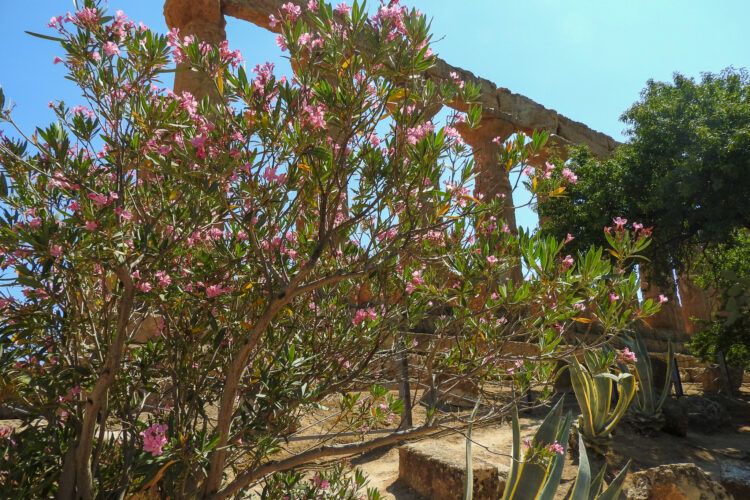
Classical Ruins, Gorgeous Vistas, Centuries of History, and Cute Animals? Showing off at Sicily’s Valley of the Temples.
Just like the people you went to school with, historic sites come with all kinds of personalities.
Some are modest, content to wait until you come to them. Others are loud and flashy and, frankly, a bit overrated. Some are rough and uninviting on the surface, but reward the patient, open-minded visitor.
And some are just straight up show-offs.
Sicily’s magnificent “Valley of the Temples,” a UNESCO World Heritage Site on the outskirts of the ancient Mediterranean city of Agrigento, definitely falls into this category. In fact, not only it is a show-off, I discovered that its star attraction, the Temple of Concordia, is a bit of a diva.
Showing off at the Valley of the Temples
I’m not criticizing. If I were the Valley of the Temples (or Valle dei Templi), I’d show off too. Featuring abundant classical ruins (including one of the best persevered ancient Greek temples anywhere), a stunningly beautiful landscapre, centuries of turbulent history, and some seriously adorable goats, it truly has it all. (Except shade. I’m serious, bring sunscreen. And a hat. Maybe even two hats.)
See what I mean about the Valley of the Temples being a show-off? Above, the ruins of the Tempio di Ercole (Temple of Heracles). Dating to the late 6th century BCE, it is probably the oldest temple in the valley. Below, a view of the modern city of Agrigento. Situated on the Mediterranean Sea, it is only a few hundred kilometers from the coast of Tunisia. This location—close to Greece, close to North Africa, and close to the Iberian and Italian peninsulas—served the ancient city well, but also made it a target of other, envious, powers.
Another reason to visit the “Valley of the Temples” is that it offers a thorough and very efficient history lesson. With temple ruins, damage left behind by the ancient city’s Carthaginian rivals, early Christian cemeteries, and remnants of the creatively repurposed city wall, thousands of years of history are on display. From Greek colony and one of the shining stars of Magna Graecia, to Paleo-Christian community and outpost of the Byzantine empire, the Valle dei Templi’s got it all.
Planning Your Visit
Set in a 1300-hectare park, the Valley of the Temples—a misnomer as it’s actually not a valley at all. The temples are all built upon a ridge above the town—is one of Sicily’s biggest tourist sites. If you want to see the whole park and visit the excellent nearby museum, you should plan on spending a whole day there. [NOTE: As of 30 May 2020, the park has reopened to visitors! Plenty of room to social distance! See the website, https://www.parcovalledeitempli.it/en/ for the most up-t0-date info].
But if you’re only a “so-so” fan of either the classical era or archeology, or if you just want to minimize your time in the sun, stick with the museum and the eastern side of the park. The whole site is fascinating, but the best preserved temples are on the eastern side, as is the city wall and the early Christian cemeteries. You can walk through millennia of Sicily’s turbulent history in just a few hours. Like I said, efficient.
If you’re only going to see half of the park, I recommend the eastern side for getting the most out of your visit. But the western half is impressive too. This is where you’ll find the amazing, and really rather trippy, ruins of the Temple of Olympian Zeus shown above. Fortunately, this temple (which really deserves its own blog post) is at the eastern edge of the western side of the park, and so an easy addition if you choose. I keep telling you, the place is efficient.
The Temples of Concordia and Hera Lacinia
Between roughly 500 and 400 BCE, the thriving Greek colony of Akragas (modern Agrigento) decided to show off its success and went on a building spree. As the contemporary philosopher and native son Empedocles put it, in these years, the people “ate as if they would die the next day and built as if they would never die.” The Valley of the Temples’ best-preserved sites, the temples of “Concordia” and “Hera Lacinia,” date from this brash and self-confident time.
Completed between 450 and 430 BCE, they are similar in size and design, but we know very little about how they functioned in the community. We don’t even know to which gods they were dedicated. Their names, as with most of the other temples, are a Renaissance-era invention based on local lore. There is a long tradition that associates Hera Lacinia with both a fertility cult and marriage rites, and the former, at least, seems to be true. Scholars do not dismiss the rest out of hand (after all, these traditions do not come entirely out of the blue), there is very little with which to back it up.
Spared by luck, circumstance, and superior architecture (the stone base, built upon solidly packed clay earth, has helped it better absorb the shocks from Sicily’s frequent earthquakes, but the jury is still out as to whether its original engineers understood and deliberately did this), the Temple of Concordia is the best preserved Doric structure in Sicily. But don’t make the mistake of envisioning it sitting on its ridge, frozen and unchanging, for millennia. Concordia has a dramatic history and resumed its original appearance only relatively recently.
Concordia and its “sister temple,” Hera Lacinia, were barely finished when, in 406 BCE, Akragas endured a long and destructive siege courtesy of its rival, Carthage. The Greeks prevailed, but much of the town was badly damaged and restored only with Carthaginian booty and slave labor. Hera Lacinia was certainly burned (scorch marks are still visible on parts of the stone) and Concordia likely endured similar treatment.
The detail of the interior of the Temple of Hera Lacinia shows some of the ancient fire damage it suffered. These scorch marks are believed to have resulted from the Carthaginian siege and brief conquest of Akragas in 406 BCE. But the Carthaginians didn’t hold the city for long. The Greeks quickly retook it and ended up using both Carthaginian booty and enslaved labor to rebuild the temples.
Both temples were restored…just in time to suffer more damage when the Romans took over in 210 BCE. Luckily the conquerors worshipped a similar pantheon of gods and wanted the city to thrive. The residents (who remained Greek in language and culture well into the Roman period) kept their temples. Whether Greek Akragas or Roman Agrigentum, the temples remained active for at least the next five centuries.
Shutting Down the Temples
By the 370s, CE, the Roman empire had embraced Christianity and everything changed. After an initial period of tolerance, emperors instituted sharp anti-pagan laws. Concordia, along with the other surviving temples, was closed and what, if anything, the buildings were used for instead is unknown. But two hundred years later, in 597 CE, the bishop of Agrigento ordered it consecrated as a Christian church and dedicated it to the apostles Peter and Paul. The building remained a church until the 18th century.
Such repurposing of sacred places was common in the early Christian world. A few centuries later it would be repeated by Muslims erecting mosques on the sites of churches (and vice versa too, as many territories went back and forth). Political and religious leaders had many reasons for this. Sometimes it was to make a point (“We, and our religion, are in charge now!”). Sometimes it was to encourage acceptance of a new faith by grafting it onto an older one. And sometimes it was out of purely practical need for a ready-made place of worship.
We don’t know what fueled the bishop’s decision, but I lean at least partly on the side of practicality. By the 6th century, many of the city’s residents, fearing pirate and slaving raids in the increasingly chaotic Mediterranean, abandoned the low-lying city core for the greater safety of the ridge. The new “neighborhood” needed a church.
From Christian Church to Early Tourist Magnet
Concordia’s reinvention as Christian basilica guaranteed it both renovation and upkeep. The walls were enclosed and covered over in plaster and paint. The entryway was reoriented and the interior redesigned to suit the church’s needs. Unfortunately, few of these changes are well-documented. Around the 1100s, a small chapel to Saint Gregory was added to the interior, and at some point, a small monastery affixed to the exterior.
But in the mid-1700s, as the obsession with classical antiquity took off and elite Europeans began to flock to ancient sites, both additions were torn down. Gradually the walls and plaster filler came off as well, though you can still see the marks the sticky substances left behind on some of the columns. It is unclear whether there was opposition or even if church was still active. The city’s population had been in decline since the middle ages, possibly as a result of the 14th-century “Black Death.” Perhaps Sicily’s king decided that he had plenty of churches but only so many near-pristine Doric temples.
British traveler Charles Gore painted this “View of the Temple of Concordia at Agrigentum” in 1777, just as the exterior walls and plaster filing were being removed as a first step toward the temple’s restoration. Maybe it’s my imagination, but the building sure looks “sticky” to me, as if the old layers were being peeled away even as Gore was painting. (© Public Domain/Wikimedia Commons)
And Speaking of Hera Lacinia….
As impressive as the Temple of Concordia is, to me at least, there is something a little too perfect about it. The nearby Temple of Hera Lacinia, though far less intact, feels more “real.” Maybe it’s the fire marks, or the dramatic asymmetry of its remaining structure, but it conveys the turbulent past in a way that the more pristine Concordia simply does not. Concordia looks a little like a film set, while Hera Lacinia is a place where I can imagine people living, fighting, and dying.
Hera Lacinia was intact, though surely showing its age, as late as the 1500s, but by the mid-1700s something had badly damaged it. Most likely it fell victim to one of Sicily’s frequent earthquakes. Perhaps the Great Earthquake of 1693 which killed 60,000 people and occasioned the rebuilding of several Sicilian cities, was to blame. The temple benefitted from the same spirit of recovery and restoration as did Concordia though there was much less to work with.
Adding to Hera Lacinia’s sense of mystery is the fact that we know almost nothing about its post-pagan, pre-18th century-restoration existence. I find it hard to believe that it was just sitting there for centuries, but what part, if any, it played in community life is completely unknown.
Possibly the building was dedicated in some way to the care and burial of the dead. As early as the 3rd century CE, much of the land around the Temple of Hera Lacinia being used as a Christian cemetery. Known today as the Grotta Fragapone, it contains more than 130 burial chambers carved into the rock. In some places you can see the remnants of religious paintings on the stone walls and even evidence of tiny private chapels. It was so vast that small roadways were cut into the rock to assist with the transport of bodies.
The excavated Paleo-Christian burial ground fans out from one side of the Temple of Hera Lacinia. The early burial chambers were carved out of existing Greek cisterns on site.
Repurposing the Ancient City Walls
But not all burials took place in the cemetery. Between the 4th and 7th centuries CE, as the city bounced between the Romans, various semi-Romanized Germanic kingdoms, and finally came under Byzantine control, numerous residents were laid to rest in arched alcove tombs, or acrosolia, carved into the southern portion of the old Greek city wall.
For the most part, the walls were not free-standing structures, but hewn out of the natural limestone cliff formation. By the late Roman period, their defensive purpose had been abandoned. (Given the Carthaginian and Roman conquests over the centuries, I guess one could argue that they hadn’t done such a great job protecting the city in any case).
I asked my guide if there was any particular distinction between those residents buried in the walls and the others buried in the crypts in the ground. He said possibly, but that we just don’t know. “We just don’t know,” in case you somehow missed it, is very much part of the Valley of the Temples experience. I guess we can add “full of mystery” to this show-off site’s long list of attributes.
Two views of the southern portion of the ancient Greek city wall. In the above photo, you can see a carved alcove that once served as a burial chamber. Below, you can see how time and the elements have worn away at other parts of the wall. Also, notice the trees in both photos. That is the best tree cover you can expect throughout most of the site. I mean it. Bring a hat.
Believe it or not, this post barely scratches the surface of what the Valley of the Temples has to offer. I told you, the place is a real show-off. Maybe one day I’ll write a post about some of the other temples, but before you go…
I promised you adorable farm animals! Meet the Girgentana Goat!
Girgentana goats (from “Girgenti,” as the city is called locally) have lived on the island for more than a thousand years. They were introduced either by the Greeks or, much later, by the Arabs, who wrested control of Sicily from the Byzantines in 831 CE. (I guess the Romans weren’t much into goats?). They are known for their high-protein milk as well as their beautifully curved horns.
After thriving for centuries (scroll back up to the 1777 painting of the Temple of Concordia and look carefully at the middle, you’ll spy some goats!) the breed became endangered after World War II. But thanks in part to the Slow Food movement, attention has been focused on reviving their numbers. As far as I’m concerned, this is just one more reason to love goat cheese.
So, what do you think? Will the Valley of the Temples make it onto your bucket list? Which is cooler? The frozen perfection of Concordia or the dramatic ruins of Hera Lacinia? Let me know in the comments section! And, if classical ruins leave you cold, well, at least you saw a goat!

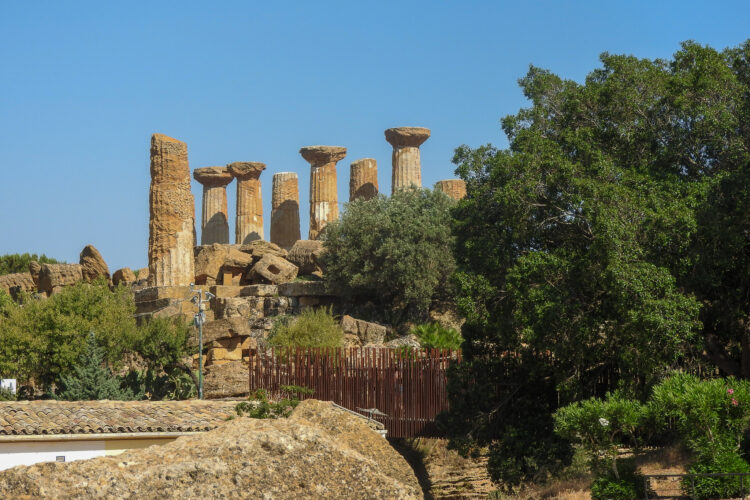
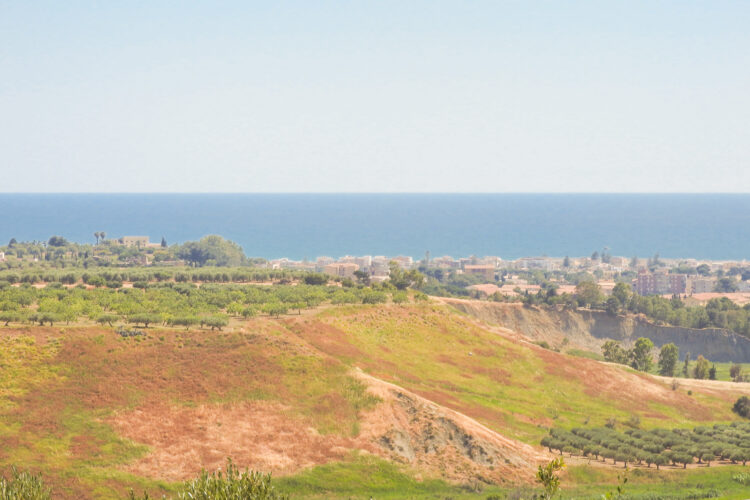
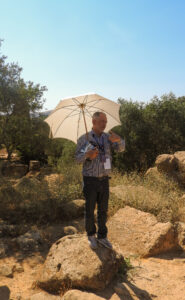
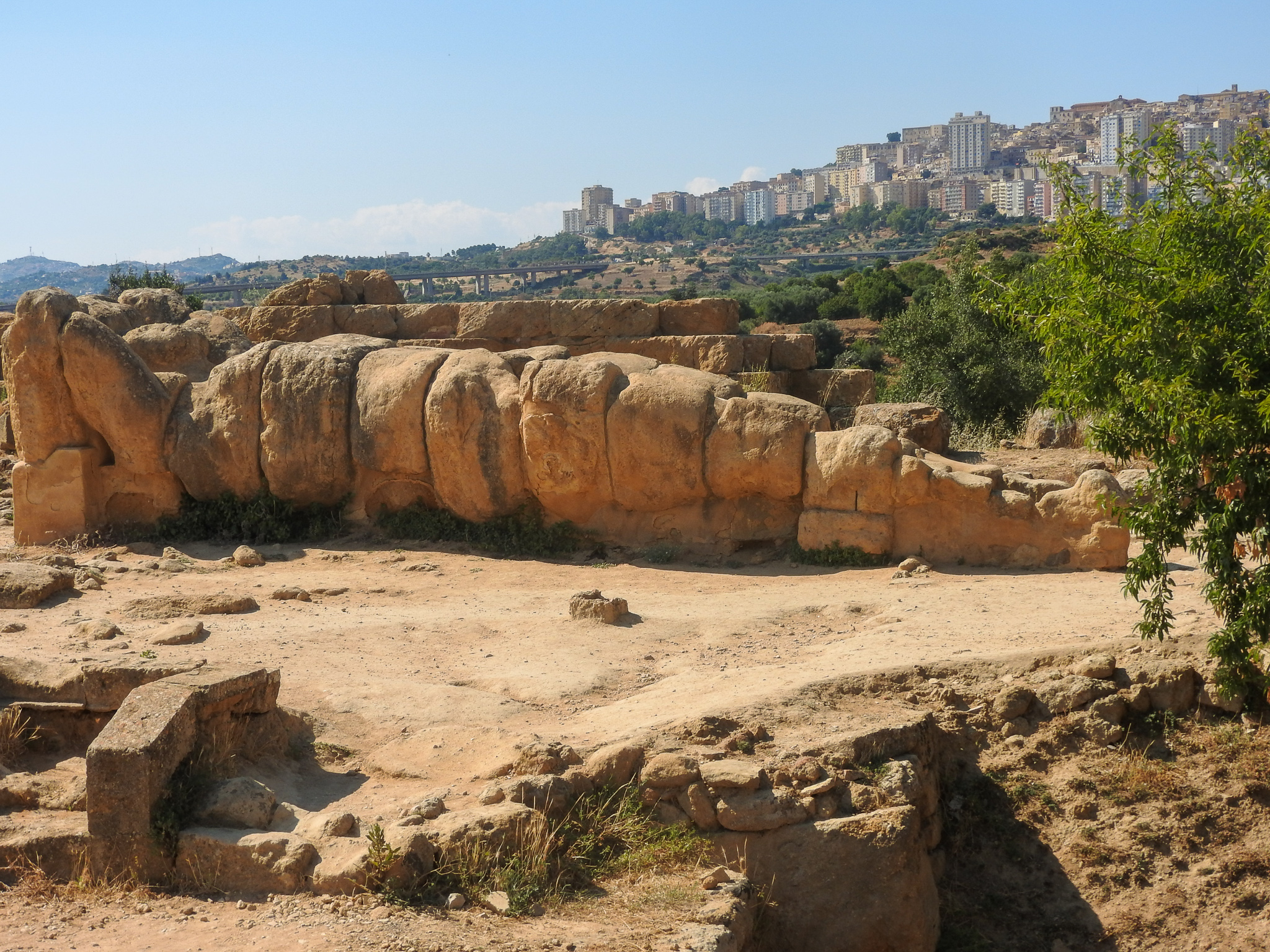
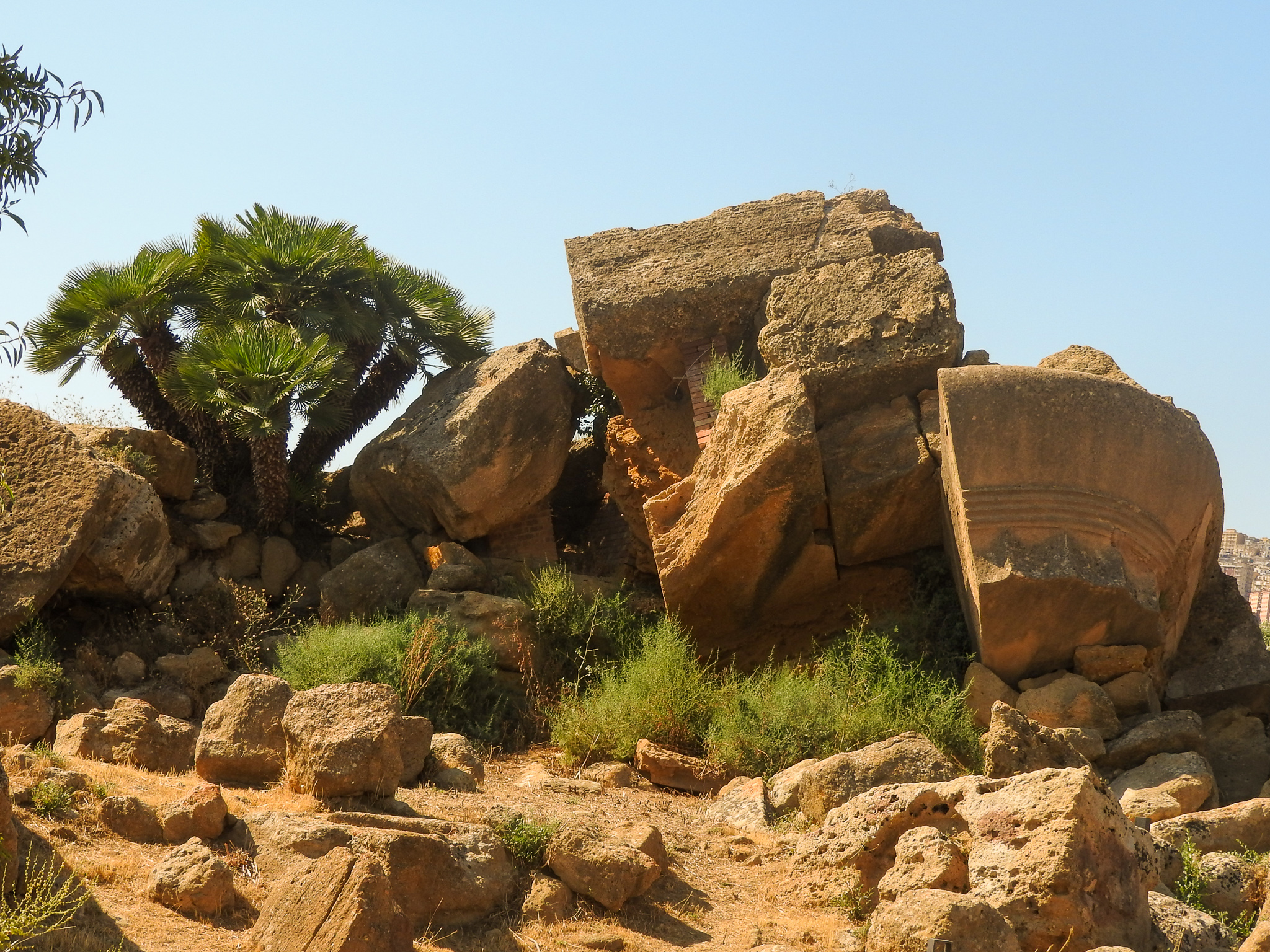
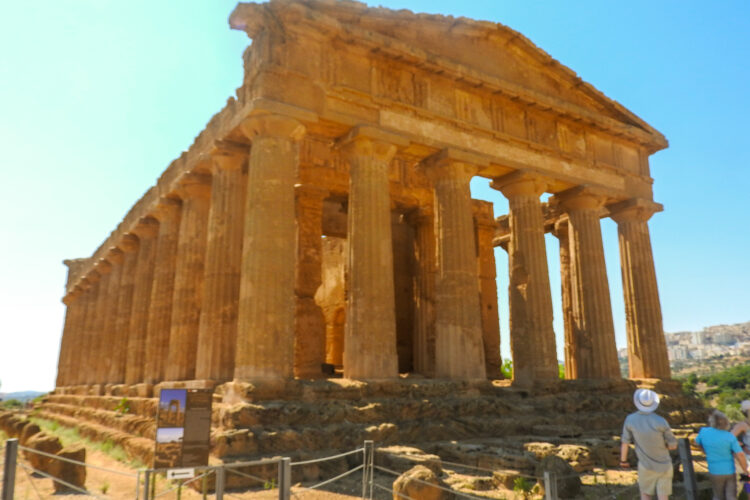
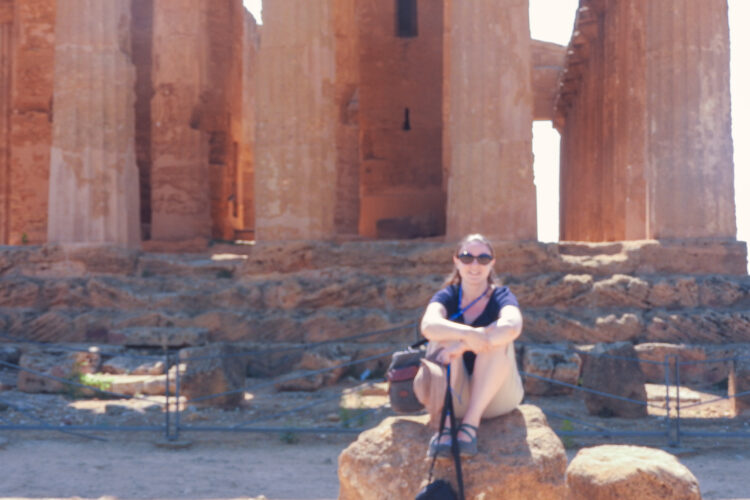
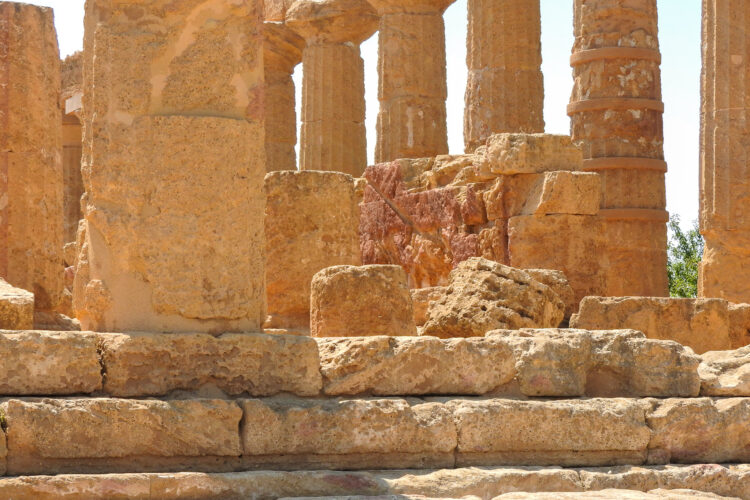
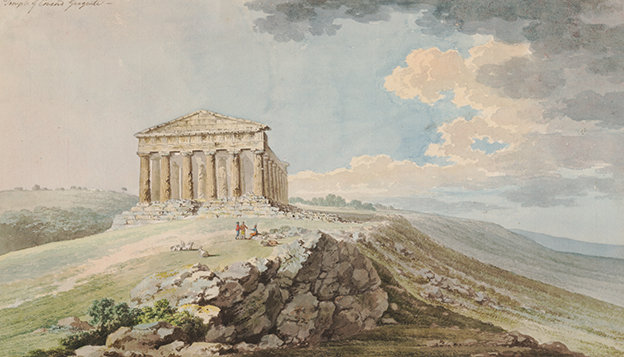

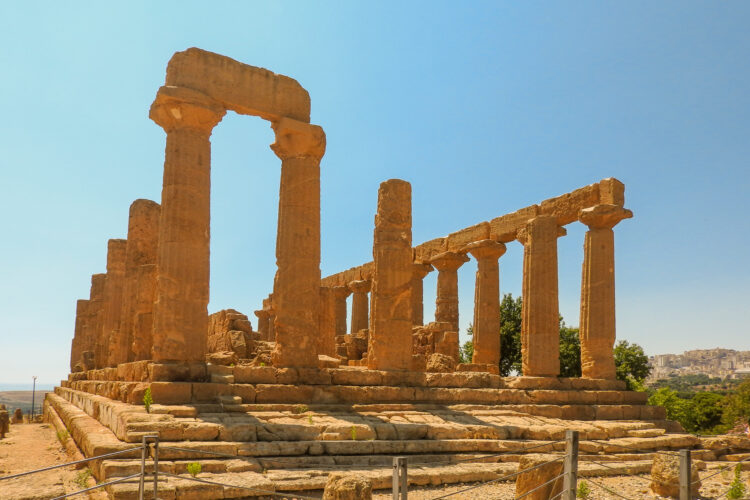
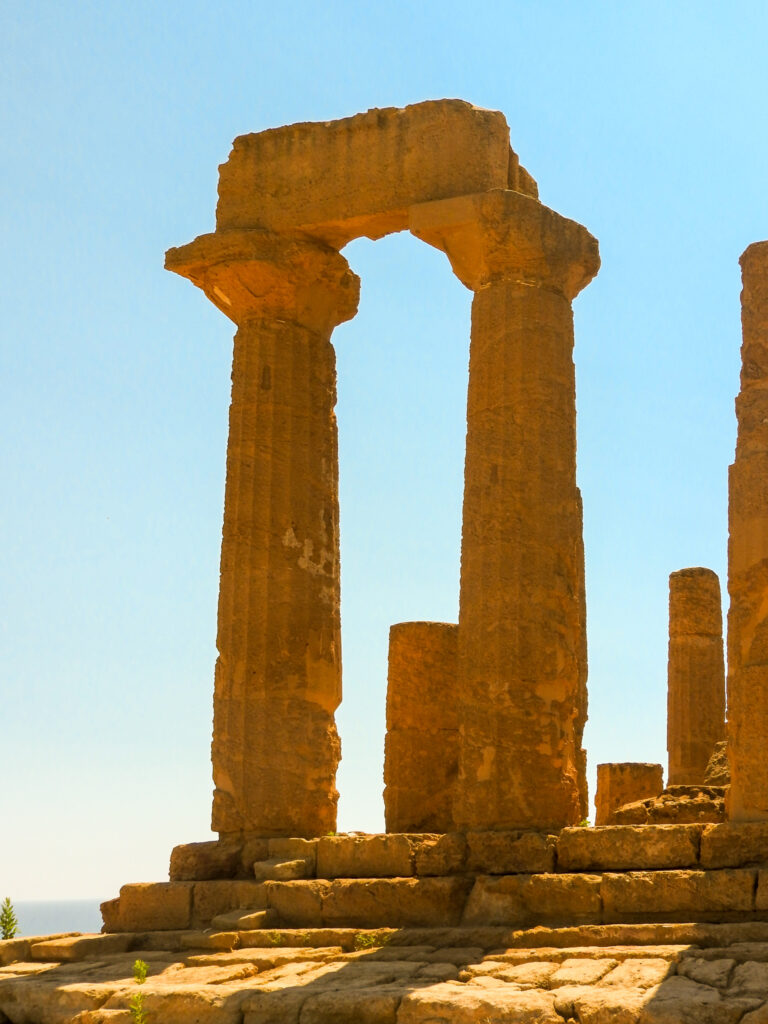
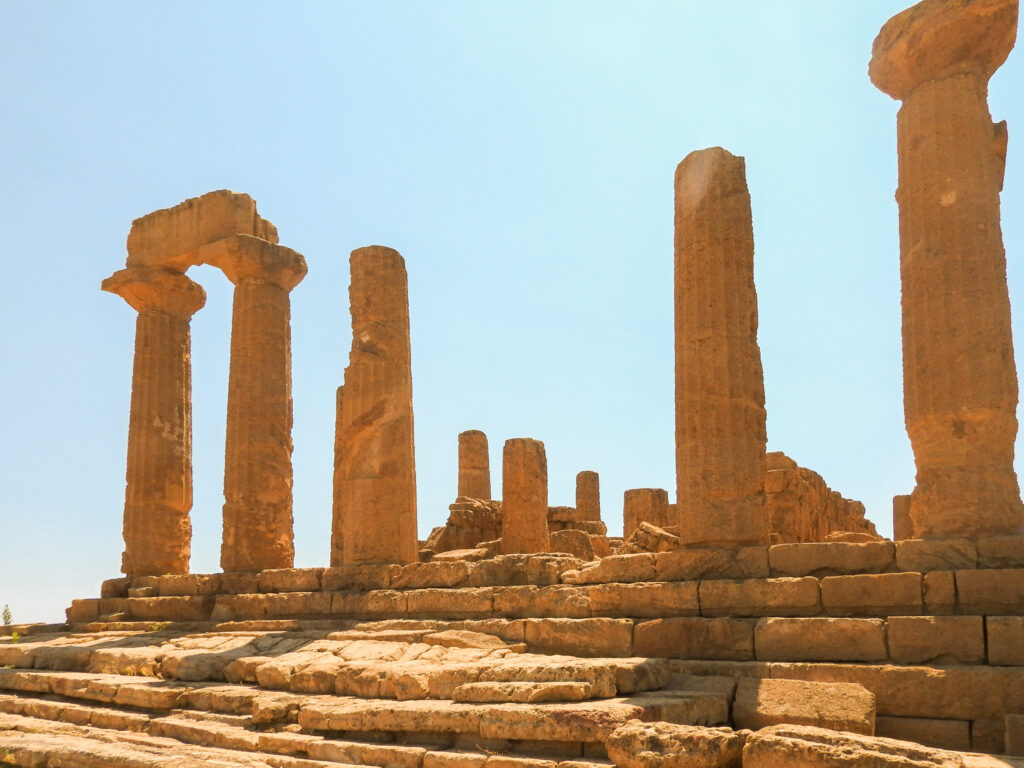
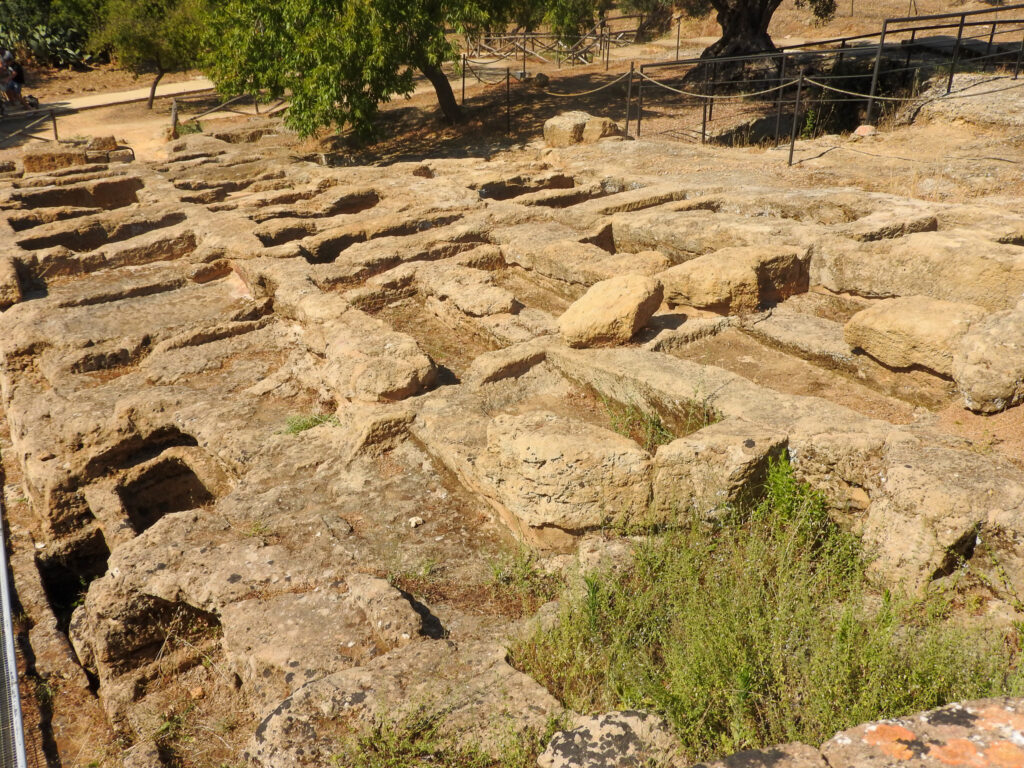
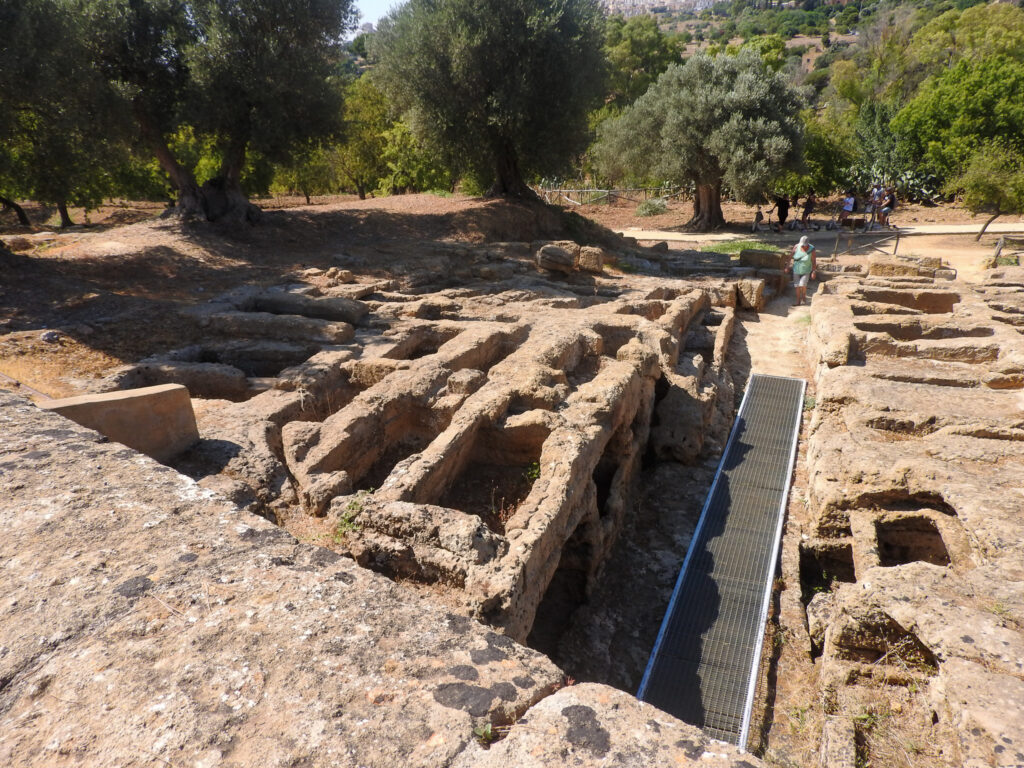
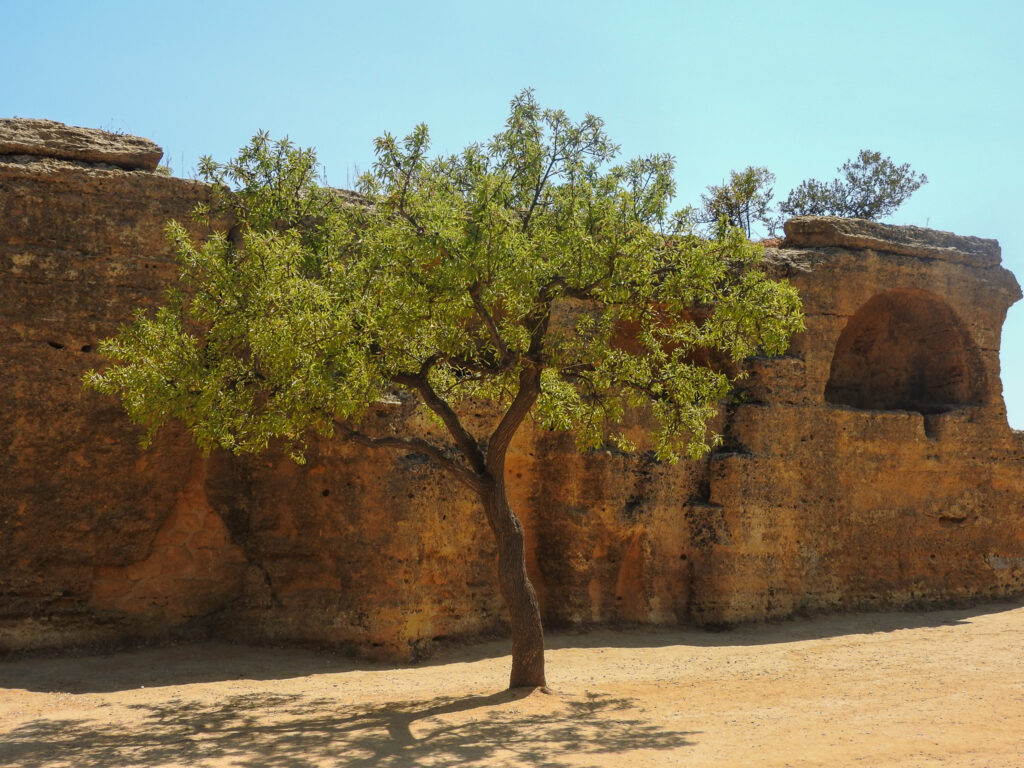
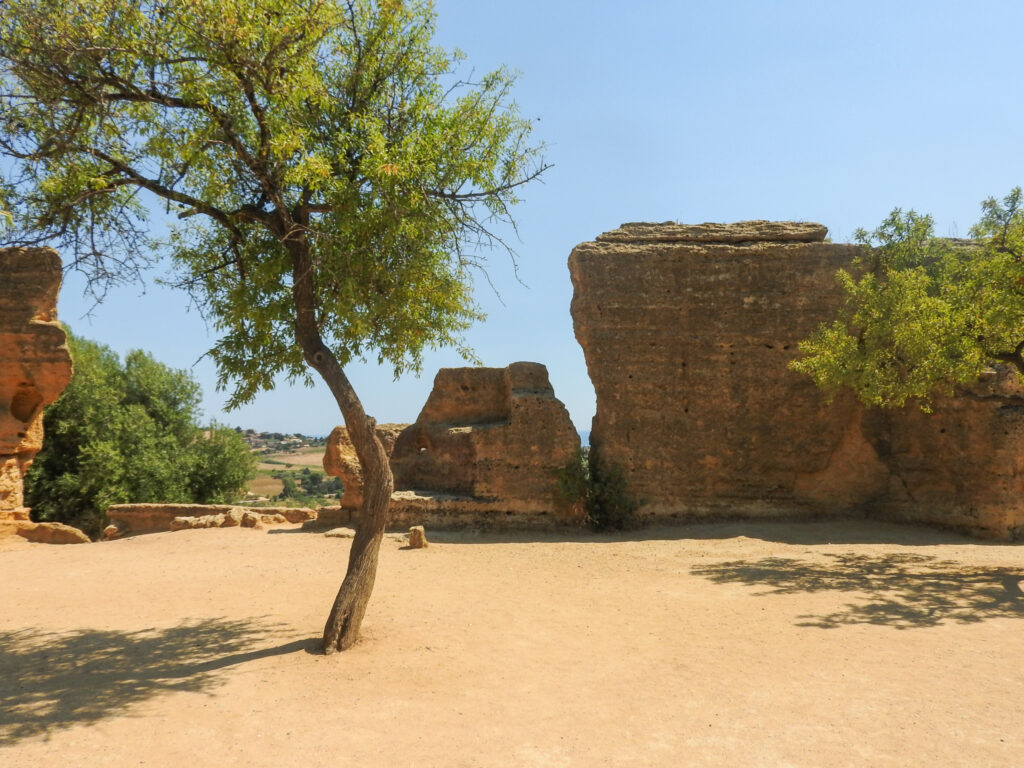
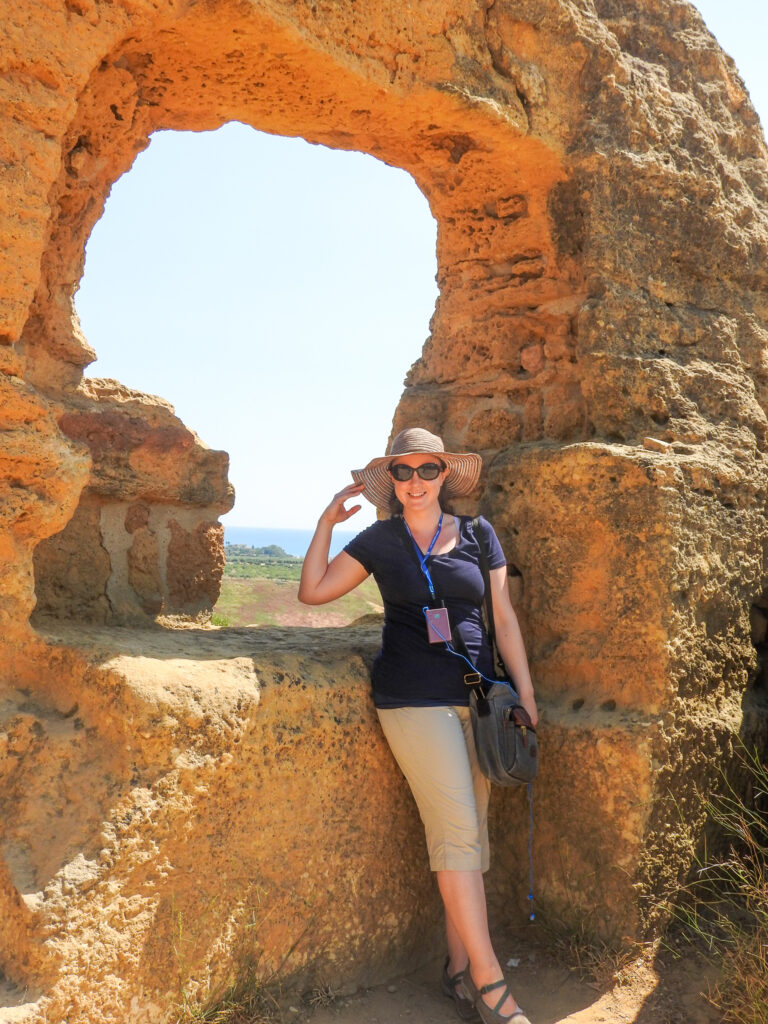
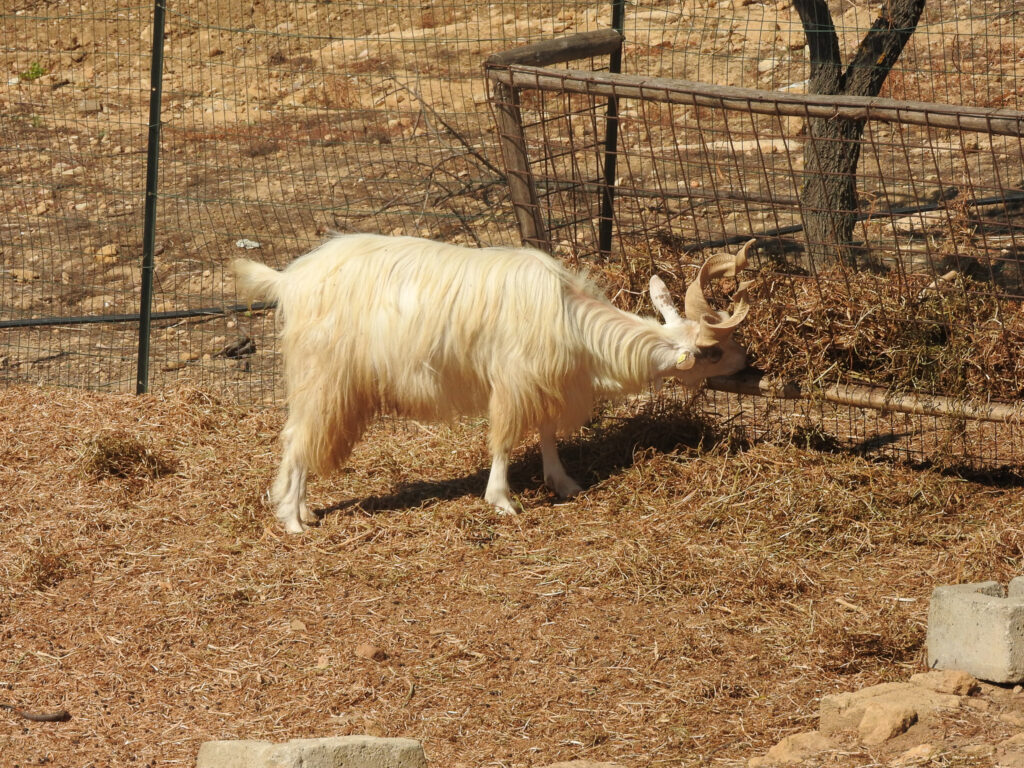
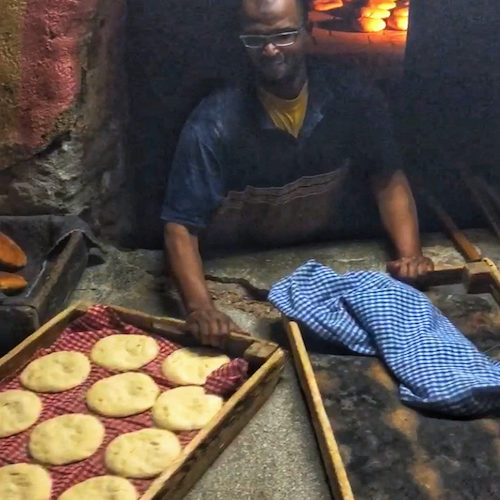
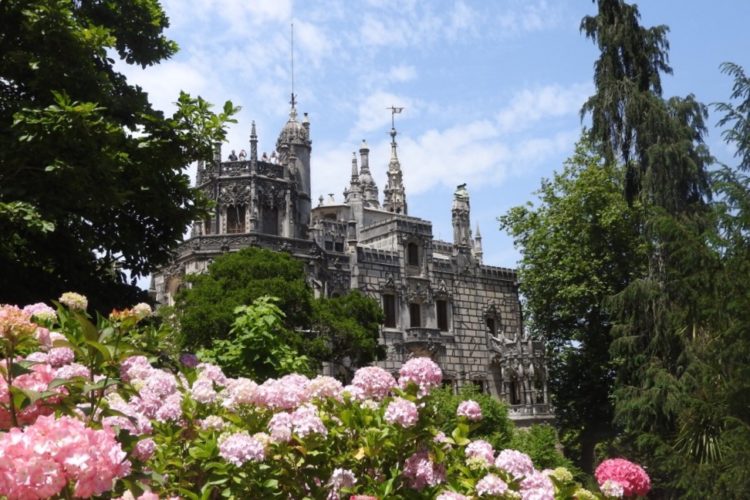
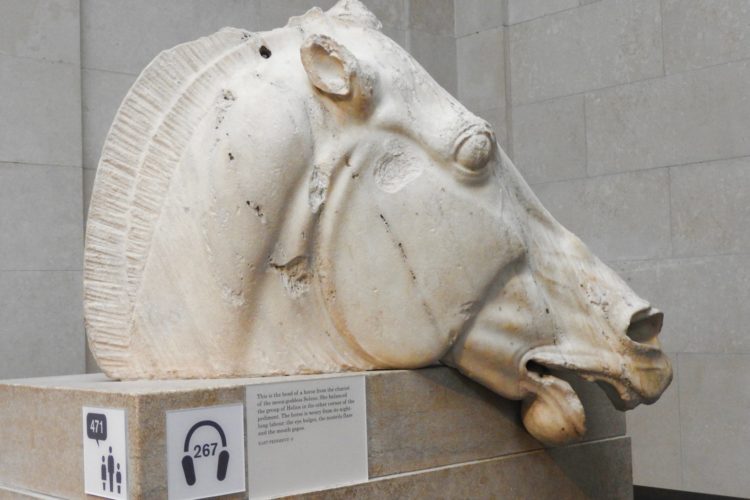
I am so glad the blog is back!! This Sicilian-sun-spangled-splendid history/travelogue/pictorial is, as usual, a masterful blend of interesting historical information, travel notes and entertainment in prose so richly packed that I need (and want) to read it multiple times to absorb it all.
And there is a goat! This approximately 1/3 “caroline” high little guy would certainly be a highlight of a trip to Agrigento for some. And…I wonder…since our blogger states that the purpose of the Temple of Hera Lacinia is unknown from the pagan period through the 18th century, and that the goats have been there for about a thousand years…could this have been the site of centuries of goat-worship? Solemnly presided over by a High Girgentana Goat-Priest, passing about bowls of goat cheese as a mystical communion offering?
Thanks for this interesting look into a slice of Sicilian history. I’m going to go back and re-read all the other posts now, so as to “take a vacation” in this still covid-limited time.
Hi Dean,
Thanks for the comment! I hope you enjoy the blog reread. I’ll do my best to get something else (perhaps goat-inspired) up soon!